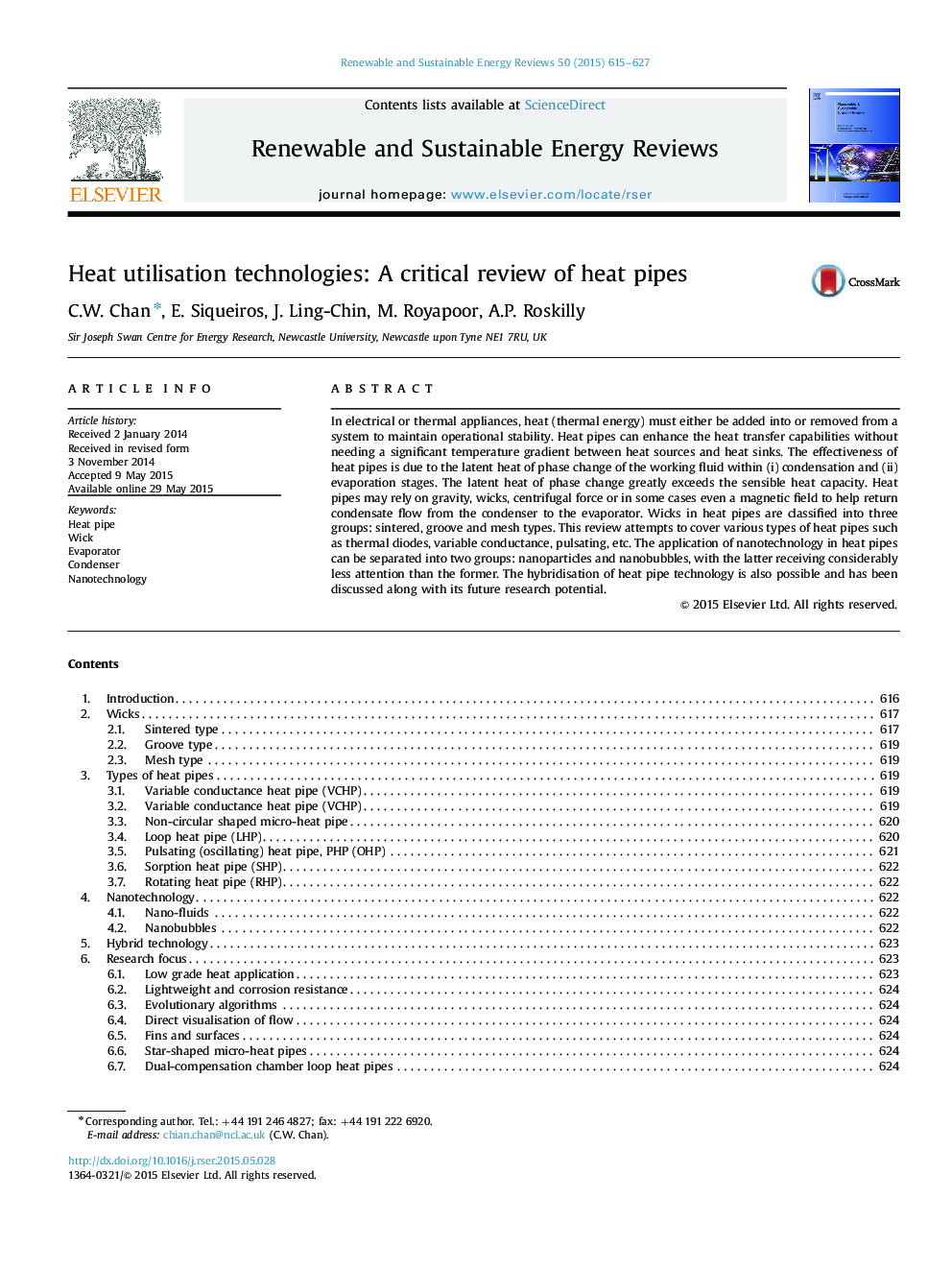| Article ID | Journal | Published Year | Pages | File Type |
|---|---|---|---|---|
| 8116132 | Renewable and Sustainable Energy Reviews | 2015 | 13 Pages |
Abstract
In electrical or thermal appliances, heat (thermal energy) must either be added into or removed from a system to maintain operational stability. Heat pipes can enhance the heat transfer capabilities without needing a significant temperature gradient between heat sources and heat sinks. The effectiveness of heat pipes is due to the latent heat of phase change of the working fluid within (i) condensation and (ii) evaporation stages. The latent heat of phase change greatly exceeds the sensible heat capacity. Heat pipes may rely on gravity, wicks, centrifugal force or in some cases even a magnetic field to help return condensate flow from the condenser to the evaporator. Wicks in heat pipes are classified into three groups: sintered, groove and mesh types. This review attempts to cover various types of heat pipes such as thermal diodes, variable conductance, pulsating, etc. The application of nanotechnology in heat pipes can be separated into two groups: nanoparticles and nanobubbles, with the latter receiving considerably less attention than the former. The hybridisation of heat pipe technology is also possible and has been discussed along with its future research potential.
Related Topics
Physical Sciences and Engineering
Energy
Renewable Energy, Sustainability and the Environment
Authors
C.W. Chan, E. Siqueiros, J. Ling-Chin, M. Royapoor, A.P. Roskilly,
